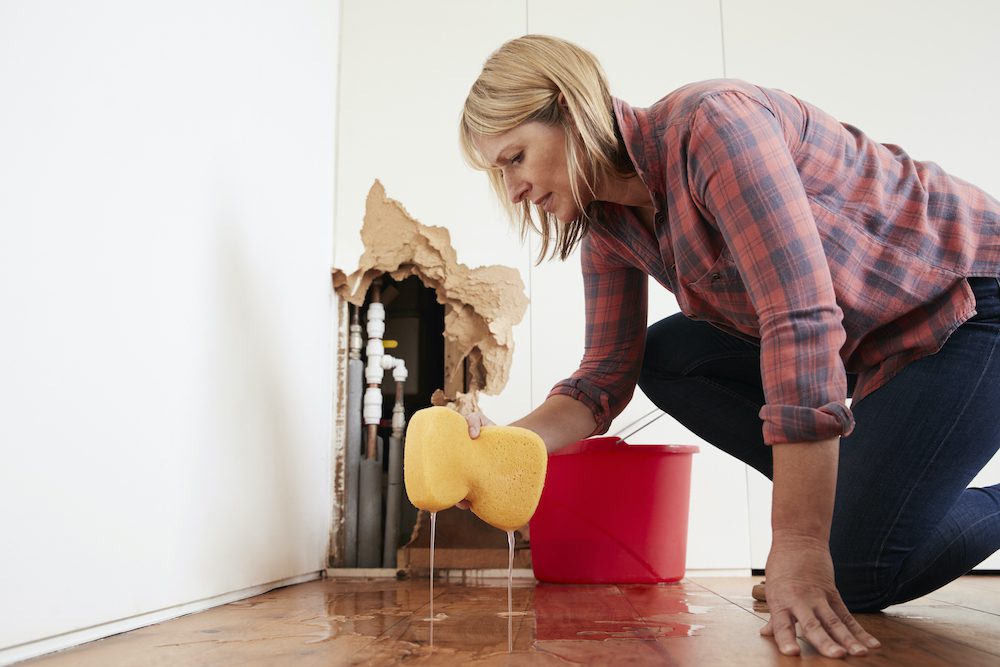Expose Secret Techniques for Finding Underground Water Pipe Leaks
Expose Secret Techniques for Finding Underground Water Pipe Leaks
Blog Article
Just about every person may have his or her own thinking with regards to Leaking water lines.

Early discovery of leaking water lines can mitigate a prospective disaster. Some little water leaks may not be noticeable.
1. Examine the Water Meter
Every house has a water meter. Inspecting it is a surefire manner in which helps you find leaks. For starters, switch off all the water sources. Make certain no person will certainly flush, utilize the tap, shower, run the washing machine or dish washer. From there, most likely to the meter and also watch if it will transform. Considering that no one is using it, there must be no activities. If it moves, that indicates a fast-moving leak. Likewise, if you detect no changes, wait a hr or two and also check back again. This implies you may have a slow leakage that can also be below ground.
2. Inspect Water Usage
Evaluate your water bills and track your water intake. As the one paying it, you need to discover if there are any kind of inconsistencies. If you find sudden changes, despite your intake coinciding, it implies that you have leaks in your plumbing system. Remember, your water costs must fall under the same array each month. A sudden spike in your bill shows a fast-moving leak.
Meanwhile, a stable increase on a monthly basis, even with the very same practices, reveals you have a sluggish leak that's likewise gradually intensifying. Call a plumber to thoroughly inspect your property, particularly if you feel a cozy location on your floor with piping beneath.
3. Do a Food Coloring Examination
When it comes to water usage, 30% comes from commodes. If the color somehow infiltrates your dish throughout that time without flushing, there's a leakage in between the tank as well as dish.
4. Asses Outside Lines
Don't fail to remember to inspect your exterior water lines also. Test faucets by connecting a garden hose. Ought to water seep out of the link, you have a loosened rubber gasket. Change this and also guarantee all links are tight. It will certainly aid get it expertly examined and also maintained annually if you've got a sprinkler system. One small leakage can waste tons of water and surge your water expense.
5. Examine as well as Evaluate the Situation
Homeowners should make it a habit to check under the sink counters and also also inside cupboards for any type of bad odor or mold growth. These two warnings show a leak so prompt attention is called for. Doing regular inspections, even bi-annually, can conserve you from a significant issue.
Check for stainings and weakening as many pipelines as well as devices have a life expectations. If you suspect leaking water lines in your plumbing system, do not wait for it to escalate.
Early discovery of dripping water lines can reduce a possible disaster. Some small water leaks may not be noticeable. Inspecting it is a proven way that assists you uncover leaks. One small leakage can squander lots of water as well as surge your water costs.
If you suspect leaking water lines in your plumbing system, do not wait for it to escalate.
How to Know If Your Home Has a Hidden Leak
Water Meter Reveals Inexplicable Water Usage
If you’d like to test whether or not there’s a leak somewhere in your home, you can do this using your water meter. Here is how to conduct the test:
Don’t use any water in your home for at least 30 minutes; this also means not turning on faucets or water-using appliances.
Go outside, and check your water meter for activity.
If your water meter shows that there was activity, even though no one was using any water, this proves that there is a leak in your home.Visible Mold or Mildew Growth
Leaks behind walls create moist, dark environments that allow mold and mildew to grow and thrive. Eventually, you might see mold growth forming on the wall closest to a hidden leak.
If mold is growing in an area that receives a high amount of moisture, such as a bathroom, it may simply be an indication that better ventilation is needed. However, if you see mold growth on a wall or the ceiling in an area where you would not expect, you probably have a hidden leak.
Musty, Mildew Odor
Sometimes you might not be able to see the mold or mildew that is growing as a result of a leak. However, the smell can give the problem away just as easily. If you catch a whiff of something musty, there’s a good chance that old water is collecting somewhere in your home that you can’t see.
Stained/Warped Walls, Ceilings, or Floors
When your home soaks up water, a variety of red flags can become visible, including ceiling stains, bubbling drywall, warped walls, and sagging floors. While these issues can be caused by excess humidity, they can also be signs that a pipe or plumbing connection has started leaking behind your walls.
Inexplicably High Water Bill
After a while, you get a general sense for what your water bill should be. If you own a pool or sprinkler system, your bill will tend to be higher during summer. However, if you receive a water bill that seems especially high, and you can’t figure out what caused it, then you may have a hidden leak somewhere that’s increasing your bill.
https://www.plumbingjoint.com/blog/2019/july/how-to-know-if-your-home-has-a-hidden-leak/

We hope you enjoyed reading our excerpt on Hacks to detect leaks. Thanks a ton for taking time to read through our posting. Enjoyed our blog? Please share it. Help another person find it. Thanks a lot for your time spent reading it.
Plumbing integrity assured. Report this page